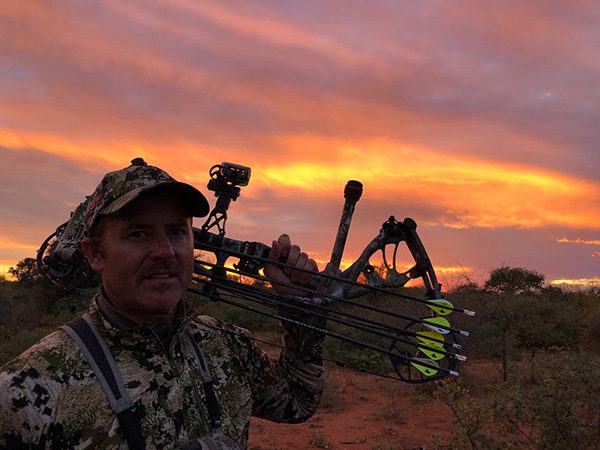
Fall is almost here, and you know what that means.
It’s time to start thinking about getting your mind right while sitting in a tree.
Fred Bear famously said that immersing yourself in the outdoors will “cleanse your soul.” And what could be more immersive than bowhunting?
Only those who have tried it understand what it’s like to put in all the work, get to your stand, get strapped in, settled down and watch the world come to life around you.
It’s like exhaling after a deep breath at the end of a long day.
The world just starts to feel right again.
But one does not simply go for a walk and shoot a deer with a bow often. There’s significant preparation and work that goes into a successful bow hunt.
To do it right, to have consistent chances at success, you need to prepare.
Hopefully by now you’ve trimmed up your stand trees, hung your stands and safety straps.
But if you haven’t, there’s still time. If you’re careful and diligent, you can still get close to the big one.
What follows are some tips to help you get into the woods and find success.
Location
There are several ways to find deer. You can scout on foot and look for sign like rubs and scrapes, you can hang trail cameras and you can go out at night shining deer.
Some are partial to walking the land and looking for signs. A good buck will leave marks for you to follow. You might not be able to count his points, but if he’s scarring up 4-inch-diameter trees, he’s probably a shooter. Looking for hoof prints around his scrape is another way to judge. Or the height of his licking branch.
For those who aren’t familiar, deer will rub their velvet off on trees, hence the name “rub” for a tree scarred up by a buck. Bucks will also scrape up the ground underneath a tree branch. These “scrapes” serve as signposts to other deer. Put the rubs and scrapes together in a line and you’ve found a travel corridor for bucks.
Find yourself a nice triple-trunk tree or something with nice cover and get planted 15-to-20 yards off of this trail with good visibility of the approaches and you’re in business.
If your corridor is near a food or water source, it’s going to be that much more reliable as a stand location. And you should always consider the wind and plan appropriately.
Safety
If you’re climbing a long ladder or you’re using screw-in steps, you really need to have a ground-to-stand safety line called a “fall-arrest system.” There are several manufacturers that make them, and you need to do your family and friends a favor and get one.
You should also use a 5-point harness and strap in to your stand every time you hunt. If you’re worried about hanging around so long that you lose consciousness, carry a clip-on knife or buy a harness with an integrated cutter.
Finally, get in shape. Walking a half-mile and climbing a 20-foot ladder is strenuous, particularly if you haven’t done much walking all summer.
Gear
Bow maintenance is a real issue. Strings and cables break. Bearings go bad. Sights get bumped. Peep sights move. Serving gets frayed.
If you haven’t shot your bow all summer, take some time inspecting it before you shoot it. Draw it without an arrow a couple times if you think it looks safe. If anything looks questionable, make an appointment to have it checked over at your local archery shop.
Never try to service your own bow without the proper bow press for your individual model. Never try to build your own strings or make a cable fit on a bow that it was not intended for.
Your arrows can also give you fits in the fall. Check all of your fletchings on your hunting arrows to make sure they’re not going to fly off. Check your broadheads to make sure they’re secure and, in the case of expandables, functioning properly. Check your lighted nocks to make sure they’ll light when fired.
And here’s a new one that some hunters have encountered — make sure the cough drops in your backpack haven’t melted all over your other gear. What a mess.
Accuracy
Can you hit a three-inch bullseye at 20 yards on flat ground? If the answer is yes, then you may go bowhunting. If the answer is no, get back to practicing.
You do yourself and your sport no favors by heading into the woods without proper preparation. This means your gear is tuned up, but also you are tuned up. A deer that is hit by an arrow but not killed is a bad look for hunters. Believe me, we heard about those at the paper. Someone sees a deer with an arrow in it and they call the paper, animal control, the DNR and, in this era, blow up social media about it.
Do the right thing for yourself, the animal and your sport and make sure you’re prepared to be accurate. Misses happen, branch deflections happen, but don’t head into the woods unprepared. Experienced hunters know the stress of a delayed recovery or an unrecovered animal and practice extensively to prevent such an event.
Remembering to turn your body and to bend at the waist instead of just moving your bow arm around is a key skill to bowhunting, especially from a tree stand. Practice from different angles and from a raised stand whenever possible.
Portions of this article originally appeared on the Shoreline Media website.